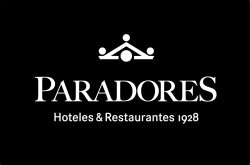Description
Parador de Aiguablava - Modern hotel overlooking the Mediterranean (4*)
The Parador de Aiguablava hotel has an elegant outdoor swimming pool, a sauna and a gymnasium and all of the Parador’s bedrooms have a private balcony. Thoroughly refurbished in 2020 & 2021, this is the most prominent hotel in Aiguablava. A modern property, ideal both for individual guests and business groups, and local activities include swimming, sailing, boat excursions, golf, riding, parachuting and mountain biking. The Aiguablava Parador's restaurant specializes in typical Ampurdanesa cooking with an emphasis on seafood and in the height of summer you can eat down in the cove, in the hotel’s beach restaurant 'Mar i Vent'. There is a short footpath down to the beach alongside but you may not want to pull yourselves away from the terrace with really wonderful views along this coastline.
The Parador de Aiguablava is set on a promontory giving it superb views along the coastline, out to sea and across the bay. This section of coastline is particularly attractive and more so because it is not built up and the landscape is a beautiful backdrop to this attractively redesigned hotel.



Lorna R
November 3, 2022 at 2:56 pmWonderful position on the Mediterranean but isolated. 100% for everything – rooms, reception, restaurant & bar.
Can’t fault it!
– Client Traveler in 2022